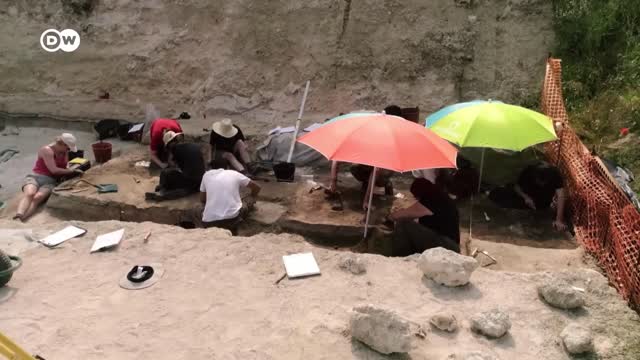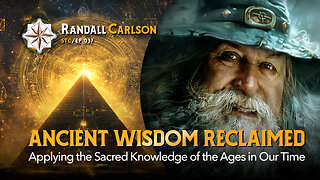Premium Only Content

Who were the Neanderthals? | DW Documentary
Long before Homo sapiens populated the earth, the Neanderthals lived in Eurasia. Now, paleoanthropologists in England and France are using new archeological methods to shed light on some previously unexplained Neanderthal mysteries. In an age clouded by the mists of time, the first early humans colonized the Eurasian continent. They settled on land that had only recently been covered by glaciers. This species, called Neanderthals, died out about 30,000 years ago -- but at one time, they formed the largest group in an area that stretched from northern France to the Belgian coast and from the Channel Islands to southern England.
During the last Ice Age, the North Sea was frozen over -- and the English Channel was a small river that could easily be crossed on foot. The Neanderthals lived in close harmony with their perpetually changing environment. They had everything they needed to survive: the meat of prey animals, edible wild plants, water and wood for cooking and heating. How did these early humans develop over almost 300,000 years? What were their lives like before they became extinct?
Our documentary is based on the latest research. We investigate various populations of Neanderthals and visit archaeological sites in northern France, southern England, and the island of Jersey.
Renowned researchers such as the British paleoanthropologist Chris Stringer and his French colleague Ludovic Slimak describe how the Neanderthals lived, and discuss their cognitive abilities. Was this species capable of structured thinking? Did they have cultures, languages, and societies? How intelligent were they, and what sort of adaptive strategies kept them alive for 300,000 years? How similar were they to modern-day humans?
-
 5:05
5:05
The Real Reason Many Whites Are Scared Of Their Children Learning True History
1 year agoFederal Health Penalty?
805 -
 LIVE
LIVE
Wendy Bell Radio
4 hours agoDaddy's Home
10,386 watching -
 LIVE
LIVE
Graham Allen
1 hour agoCanada FOLDED!! Trump Wins Trade War With The 51st State! + The Department Of Education Is DONE!
5,973 watching -
 7:53
7:53
Misha Petrov
14 hours agoThe CRINGIEST Moments From The Grammys
7.62K75 -
 5:57
5:57
China Uncensored
18 hours agoLiving in China Comes With Some Risks
23.5K24 -
 12:32
12:32
Bearing
1 day agoAustralian Gender Clinic Caught SECRETLY Transitioning Kids 🤬🤬
13.5K71 -
 4:34
4:34
AlaskanBallistics
1 day ago $1.05 earnedFosTech Echo Trigger
7.52K10 -
 9:10
9:10
ariellescarcella
13 hours agoI Asked People To Toss Out An Identity : The Queer Alphabet Is OVER
5.48K7 -
 27:00
27:00
Squaring The Circle, A Randall Carlson Podcast
19 hours agoSPECIAL EPISODE: #037 Randall Carlson Explains The Vital Role of Sacred Geometry in the Modern Age
6.26K2 -
 58:35
58:35
Trumpet Daily
21 hours ago $6.07 earnedThe Trade War Begins - Trumpet Daily | Feb. 3, 2025
20.6K35